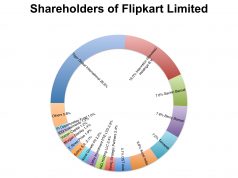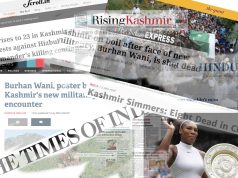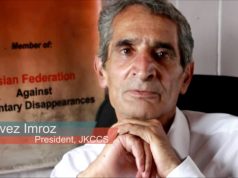As a practical matter, it means that one out of twenty men in that age group will not have a mate available. What effect does that have on their social and mental well-being? A small portion of men may not be affected adversely by lack of female companions because they have naturally-occurring low sex drive, homosexuality or the availability of other sexual outlets such as prostitutes and masturbation. However, if society or government becomes more conservative, as it seems wont to do in India, even these outlets become closed off.
There is also a geographic component to the issue. While people can move about freely within the country, the data shows that sex ratios vary from state to state.
The chart below presents the proportion of the total population of the state that that is composed of males and females in each 5-year age range from birth to 80. Those persons above 80 have been grouped into a single range. Blue bars represent males, pink bars represent females.









